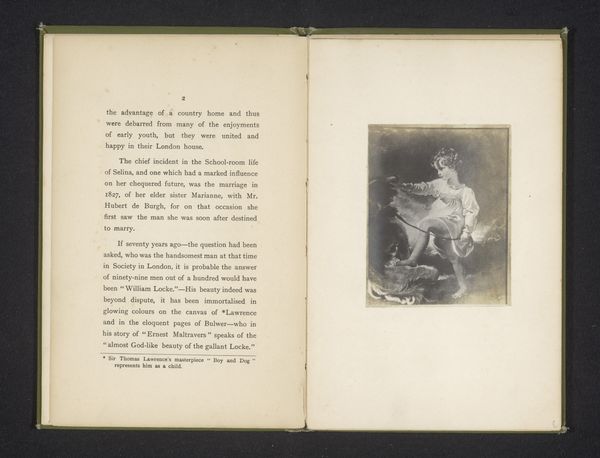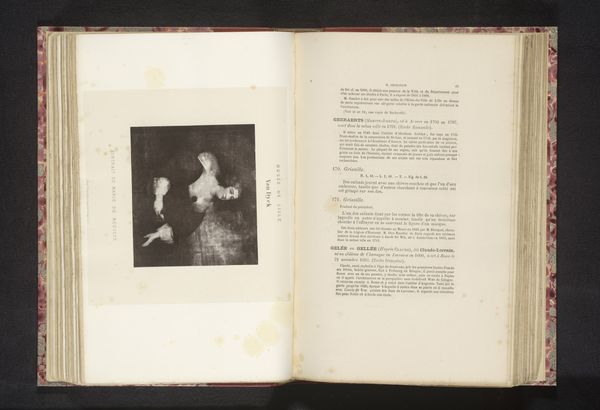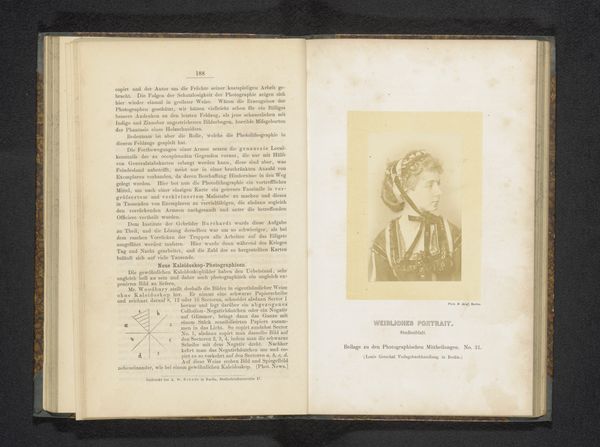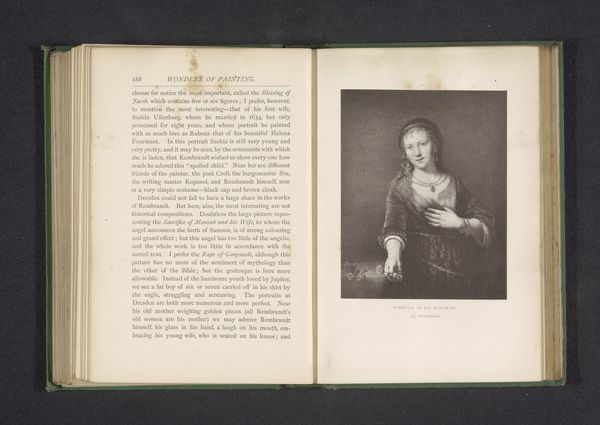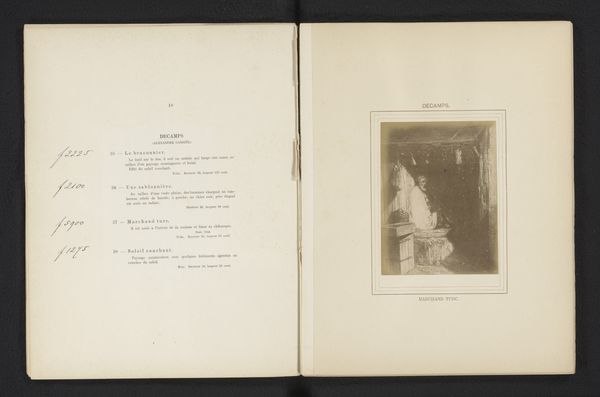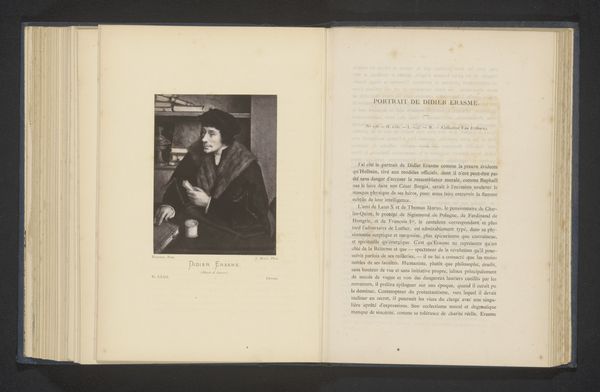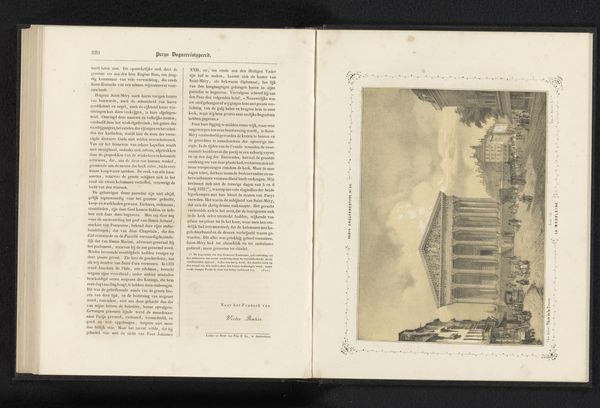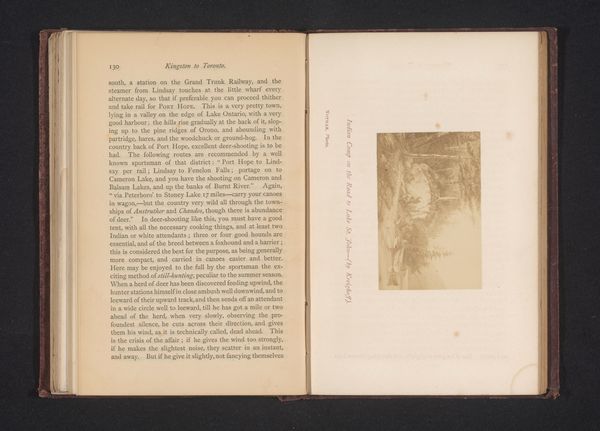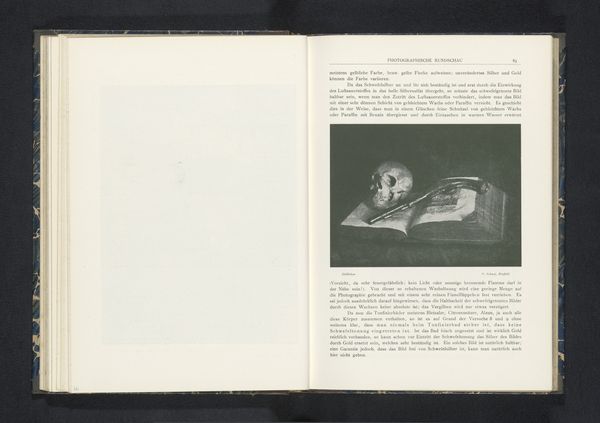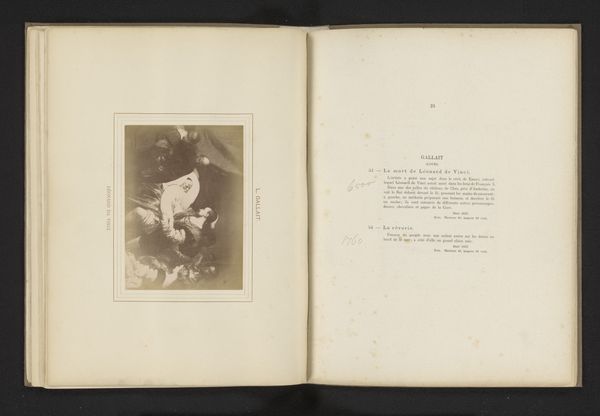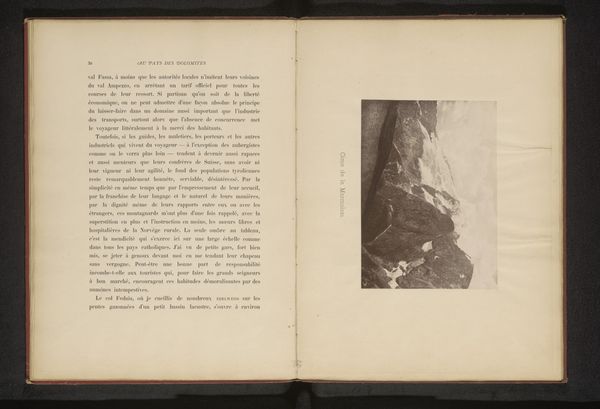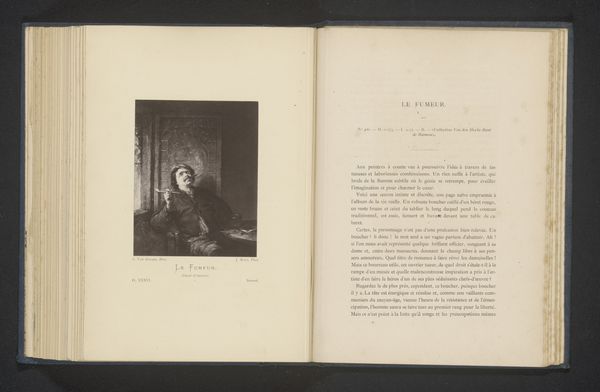
Fotoreproductie van een schilderij, voorstellende een portret van een jongen als de heilige Sebastiaan before 1867
0:00
0:00
print, photography
#
portrait
# print
#
11_renaissance
#
photography
#
italian-renaissance
Dimensions: height 68 mm, width 55 mm
Copyright: Rijks Museum: Open Domain
Curator: Here we have a photographic reproduction, dating from before 1867, of a painting depicting a boy as Saint Sebastian. Editor: It has a somewhat melancholy quality. The monochrome photography lends a stark simplicity to a potentially very decorative subject. The implied textures of the hair and the faint suggestion of blood are interesting, too. Curator: Indeed. The original artwork this photograph documents, of course, likely draws upon Italian Renaissance artistic traditions and the archetype of Saint Sebastian—a figure tied to both suffering and resilience, whose imagery often blends religious and classical ideals. We need to consider the socio-political conditions and historical religious events through the lens of this iconic figure to see its artistic value. Editor: I’m also considering the act of reproduction itself here. Photography, in its material form, brings art, that was once accessible only to an elite class, to a much broader audience. What were the means by which the photograph was created, distributed, consumed? These tell us a lot about shifting social values. Curator: Absolutely, that increased accessibility marks a real shift. Before photography, most people would only ever experience art like this through textual descriptions or word of mouth. Photographs fundamentally change this dynamic. It offers us insight into how Italian Renaissance works, such as the one depicted here, disseminated their influence. Editor: What’s more, photography has its own inherent processes that render certain textures while flattening others. Take his curly hair: the hair’s artifice becomes particularly noticeable through this technology. The limitations of reproduction foreground the actual physical components that constitute both painting and photograph. It demands a careful investigation of labor! Curator: These reproductions, like the one before us, played an important role in constructing cultural knowledge and taste at the time, especially about artistic heritage. What was at the foreground of the debate surrounding reproduction, distribution, cultural value? How was access negotiated and distributed among social classes? Editor: Yes. Thinking about the material shift of an image through photographic means prompts questions of authenticity, labor, and worth, ultimately inviting reflection on who is served by these art forms and for what means. Curator: Well, this has offered a multifaceted consideration. I find myself newly appreciating the ways this piece speaks to broader conversations of history and culture, even beyond what appears at first glance. Editor: Agreed. It's fascinating how even seemingly simple works reveal complex questions around production, value, and reception when we examine their materiality and historical contexts closely.
Comments
No comments
Be the first to comment and join the conversation on the ultimate creative platform.
